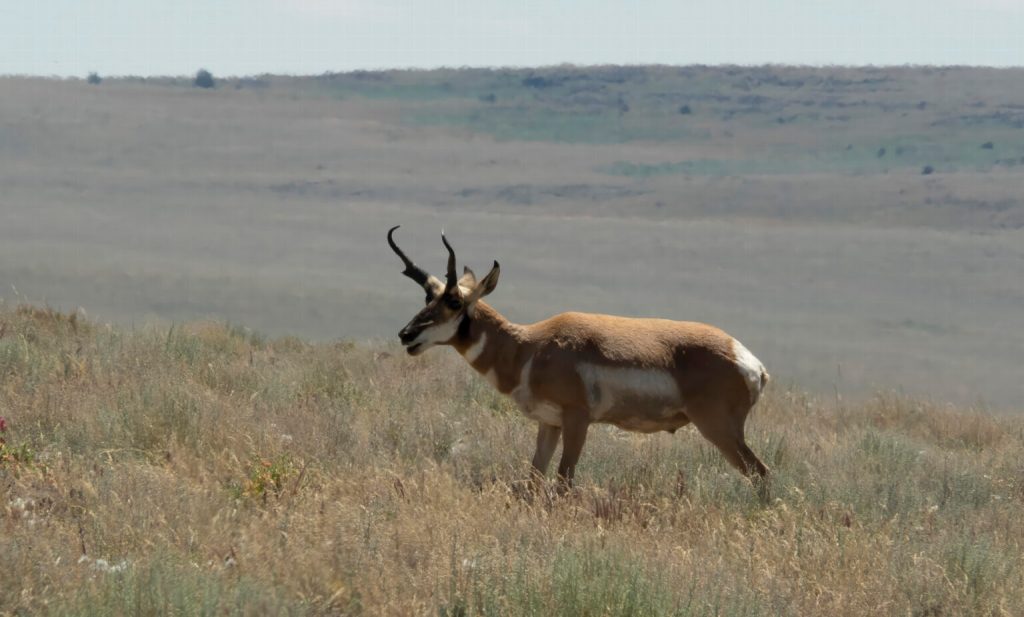Autonomous in Oregon: A new spin on rural-urban divide
Published 10:07 am Thursday, May 8, 2025

- Pronghorn antelope roam near Rome in eastern Oregon. (Photo by Laura Tesler/Oregon Capital Chronicle)
The idea of Greater Idaho — splitting off most of eastern Oregon to join with the state of Idaho — isn’t going to fly. It won’t happen.
So here’s another idea:
The Autonomous Area of Eastern Oregon. And Western too, for good measure.
Trending
This concept was not invented in the deep recesses of a pundit’s mind. It comes from a recently introduced piece of legislation by a Republican lawmaker in the state of Washington.
Washington has a regional dynamic similar to Oregon. The bulk of its population is west of the Cascades and as a region votes clearly Democratic, while the geographically larger but less populated territory to the east votes Republican — with all the correlating social and economic considerations that implies. Washington’s east side hasn’t organized a highly visible join-Idaho effort the way Oregon’s has, but the proposal has surfaced occasionally.
A related but different idea emerged in this year’s Washington legislative session. Rep. Rob Chase, R-Spokane Valley in House Bill 2085 proposed keeping Washington state intact, and its congressional representation unchanged, but splitting most governing within the state.
The bill described it this way: “The legislature intends to divide the state into two autonomous regions, the Puget Sound region and the Columbia region, by constitutional amendment. Each region would provide regional governors, regional legislators, and regional judges. The state of Washington will remain a single state for purposes of federal election, as proposed in New York Senate Bill 2023-S3093.”
Presumably, that would mean splitting the key regional elections (both autonomous areas would have governors and legislatures, for example) while both vote under a common system for federal offices. Laws and regulations and finances would be affected as well.
Chase said of this, “We would have better representation that takes into account the ideals, principles, priorities, beliefs, and values found in the populace that it serves. Isn’t this what our Founding Fathers envisioned when establishing our Democratic Republic?”
Trending
This approach isn’t something familiar to American government: There are no formal “autonomous regions” in the United States. They’re more common in other parts of the globe, however, including the Caucasus, China and even a slice of Finland. Greenland, famously, is an autonomous region: Largely self-governing but under the national umbrella of Denmark.
On an American state level it’s an ambitious idea, but it may be within the purview of the state legislature. It probably would require a state constitutional amendment, but — because states do have some leeway in setting up their own governments — it might not require federal approval. If the legislature and voters approved, it probably (we’d have to see what the courts would say) could happen.
The bill didn’t go anywhere in the Washington legislature this year, nor should we expect any voter action. Chase said he introduced it now mainly to get a head start for a future push.
But the Greater Idaho folks have no doubt heard of it, and the idea of a similar bill introduction in Salem may be floated soon if it hasn’t been already. The process might even be simpler in Oregon: While Washington requires constitutional amendments to come from the legislature, Oregon allows them via citizen initiatives.
So how might this play out in Oregon?
Imagine the Greater Idaho group or some other organization petitioning for a constitutional amendment to be approved, or not, by the voters. This would have a considerable advantage over the kind of long-term and probably hopeless slog to change state boundaries. If structured carefully, the issue might be resolved in a single election through a change in the state constitution. If it passed, it would happen through the approval of the voters, which would give the idea powerful legitimacy statewide.
Getting most Oregonians to vote in favor, of course, would be difficult.
You’ll also notice the reference to “structured carefully.” Plenty of tricky issues would have to be addressed. We might be talking about three governors in Oregon, one for the whole state and one each for the east and the west. How do they relate to each other, and to the federal government, and what relative powers would they have? You could ask similar questions about the Legislature. Would there still be a statewide legislature, and if so, what could it and could it not do?
What might be the differences in tax and spending? What about federal money coming to the state of Oregon: How would it be divided? How would law enforcement and safety agencies coordinate? If criminal and other laws were different (which would seem to be part of the point of having an autonomous region), what about extradition? What would be the authority of whatever remained of a statewide Oregon government, because there would have to be one if only to deal with other states and the feds.
The autonomous idea is more complex than it first sounds. If Greater Idaho is watching the action across the Columbia, they may want to pay attention to how legislator Chase started to field the questions that are sure to multiply.







